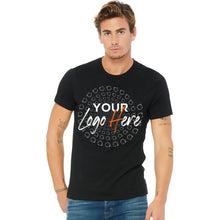Qu'est-ce que l'impression par transfert thermique ?

L'impression par transfert thermique est une technique d'impression fiable utilisée par les imprimeurs pour les commandes d'impression commerciales et personnalisées. Également connue sous le nom d'impression thermique, d'impression par transfert thermique et d'impression par transfert thermique à la cire, cette technique offre des résultats de qualité et est économique. Cette technologie d'impression est fréquemment utilisée et, dans cet article, nous vous expliquons tous les aspects de cette méthode afin que vous puissiez la comprendre en détail avant de vous lancer.
Ce guide comprend l'historique de la technique d'impression, les différentes étapes incluses dans le processus, ainsi que les avantages et les inconvénients du choix des méthodes d'impression thermique ou d'impression par transfert thermique par rapport à d'autres méthodes d'impression.
Continuons plus loin et répondons à vos doutes pour garantir que votre commande d'impression par transfert thermique chez Custom One Online vous offre les résultats escomptés.

Histoire de l'impression par transfert thermique :
Dès que le polyester est devenu le nouveau tissu favori, le besoin d'une technique d'impression plus efficace et de meilleure qualité s'est fait sentir. C'est ainsi que l'impression par transfert thermique a été inventée. Ce procédé très complexe consistait à imprimer des motifs sur du papier à l'aide de colorants sélectifs. Le papier, également appelé pochoir, était ensuite placé sur le tissu, où le motif était finalement transféré.
À l'origine, l'impression par transfert thermique était réservée aux articles de fantaisie. Les clients commandaient des hauts et des t-shirts en polyester, et les résultats étaient satisfaisants. Aujourd'hui, cette pratique a considérablement évolué et est devenue l'une des principales techniques d'impression utilisées par les industries textiles et manufacturières.
Les étapes du processus d'impression par transfert thermique :
Pour un transfert impeccable de vos logos ou motifs personnalisés sur vos vêtements, l'impression par transfert thermique est une excellente méthode. Le transfert de l'impression sur papier, puis du papier sur le tissu, est exemplaire. Il existe différentes méthodes de transfert thermique, notamment le transfert par jet d'encre, le transfert par sublimation, le transfert d'appliqué numérique et le transfert vinyle. Chaque procédé comporte plusieurs étapes, que nous détaillerons dans cette section.
1- Rassembler les fournitures nécessaires
Pour une impression par transfert thermique efficace, vous aurez besoin de quelques éléments et d'un équipement de pointe. Parmi les fournitures essentielles nécessaires à cette opération, on trouve :
- Ordinateur
- Imprimante
- Encre
- Papier de transfert thermique
- Coupeur
- Presse à chaud
- Coussins chauffants
- Ruban chauffant
- Feuille résistante à la chaleur
- Substrats et plus
2- Création du design
La deuxième étape du processus consiste à créer le design. Chez Custom One Online, nous vous proposons de choisir un modèle, de soumettre vos propres designs ou de créer un design avec l'aide d'un designer professionnel de notre équipe.
3- Impression du dessin
Le motif final est ensuite imprimé sur un papier transfert thermique spécial pour la suite du processus. Nous utilisons trois types d'encre différents : l'encre jet d'encre, l'encre pigmentée et l'encre à sublimation. Le choix se fait en fonction du produit et de l'application.
4- Découpe du dessin
À cette étape, le motif est découpé à l'aide d'une massicot à vinyle. Cependant, cette étape n'est pas utilisée dans tous les procédés.
5- Préchauffage de la presse à chaud
Le préchauffage de la presse à chaud est une étape cruciale et doit être réalisé avec la plus grande efficacité. La presse est d'abord ouverte et le plateau chauffant est retiré du coussin chauffant. Le plateau et le coussin chauffant sont ensuite ouverts pendant le préchauffage. La température idéale pour l'impression par transfert thermique se situe généralement entre 175 et 190 °C.
6- Réglage de la pression
La pression de la presse est ajustée en fonction de l'épaisseur du tissu. Plus le tissu est épais, moins la pression est nécessaire. Dans la plupart des cas, une pression moyenne ou élevée est utilisée selon le type de tissu.
7- Réglage de l'heure
Selon le type de processus de transfert thermique, le temps de givre varie considérablement. Le guide de temps habituel est le suivant :
- Pour le papier transfert à jet d'encre, le temps est de 14 à 18 secondes.
- Pour le transfert par sublimation thermique, le temps est de 25 à 30 secondes.
- Pour le transfert d'appliqué numérique, le temps est de 20 à 30 secondes.
- Pour le transfert de vinyle, le temps est de 45 à 60 secondes.
8- Pose du support et transfert en place
Le produit est alors positionné sur la plaque et le papier décoratif est placé au bon endroit, sur la zone de pressage. Dans le cas d'un transfert vinyle, le papier est recouvert d'un tissu fin pour protéger le motif.
9- Pressage du produit
Comme votre machine à presser est entièrement réglée à ce stade, vous pouvez maintenant tirer la poignée ou appuyer sur le bouton de démarrage pour presser le motif contre le tissu.
10- Retrait du film
La presse est équipée d'une minuterie. Attendez qu'elle s'éteigne, puis ouvrez-la. Retirez ensuite le film. Votre papier transfert sera alors chaud et le motif sera transféré sur le produit, comme vous le souhaitiez.
Avantages et inconvénients de l'impression par transfert thermique
Avec l'ajout de plus en plus de couleurs à la gamme d'impression par transfert thermique, cette méthode d'impression a gagné en popularité. Comme toutes les techniques d'impression, cette technologie présente des avantages et des inconvénients, détaillés ci-dessous :
Avantages de l'impression par transfert thermique
Cela permet d’économiser des ressources (temps, argent et efforts) :
Le plus grand avantage de ce processus est qu’il est très simple et abordable. Les entreprises de fabrication économisent beaucoup de temps, d’efforts et d’argent en choisissant l’impression par transfert thermique.
Idéal pour les petites commandes :
Parce que la réalisation du dessin et son impression sur papier puis sur tissu sont plus faciles, c'est la bonne technique d'impression pour les petites commandes.
Impression à la demande :
Les prestataires de services d'impression peuvent prendre et exécuter des commandes d'impression à la demande et répondre aux exigences de leurs clients.
Aucune restriction de couleur
Le client peut choisir la couleur qu'il souhaite et obtenir le motif souhaité imprimé sur le tissu.
Diversité:
Ces techniques d'impression sont adaptées à la peinture sur tissu et sont donc recommandées pour l'impression de vêtements personnalisés. Cependant, elles offrent également d'excellents résultats sur des surfaces telles que des tasses, des assiettes et des puzzles.
Pas de désordre :
Le principal avantage de l’utilisation de l’impression par transfert thermique est que la technologie n’est pas salissante comme de nombreuses autres techniques d’impression.
Des résultats de haute qualité :
Les résultats finaux d'une machine de pressage haut de gamme sont exemplaires, les machines modernes sont capables d'imprimer des images et des motifs complexes, vifs et en couleur.
Inconvénients de l'impression par transfert thermique
Pas idéal pour les grosses commandes :
Étant donné que le motif doit être découpé à chaque impression et que le papier doit être retiré, il y a beaucoup de travail à faire à chaque fois que vous imprimez des vêtements.
L'impression s'estompe :
Bien que cela ne se produise pas à chaque fois, la décoloration de l'impression est un problème lié au transfert de chaleur dans certains cas.
Vous ne pouvez pas repasser l'imprimé :
Lors du repassage du t-shirt, même un petit passage de la presse sur l'imprimé peut ruiner le motif.
FAQ sur l'impression par transfert thermique
- Quel est le meilleur type de presse pour l’impression à chaud ?
Pour un projet de transfert thermique unique, vous pouvez utiliser le fer à repasser à la maison. En revanche, si vous le réalisez à l'échelle commerciale, vous devrez investir dans une presse à transfert thermique de marque. L'efficacité du procédé permet une application uniforme et de haute qualité, et garantit que le motif ne s'efface pas après quelques lavages.
- Existe-t-il différents types de transferts appliqués à chaud ?
Oui, il existe différents types de techniques de transfert thermique et la sélection varie d'une entreprise à l'autre. Les options courantes incluent les transferts sérigraphiés, les transferts numériques en couleur et les transferts en strass.
- Qu'est-ce que le transfert thermique en vinyle ?
Le transfert thermique vinyle utilise un polymère vinylique spécial pour créer des motifs sur certains tissus. C'est une technologie d'impression fiable pour la création de t-shirts, maillots, accessoires et autres objets promotionnels personnalisés.
- Quelles sont les instructions de lavage pour l'impression thermique sur vinyle ?
Il est recommandé de ne pas nettoyer à sec les vêtements imprimés par transfert thermique. De plus, il est impératif de les laver à l'envers pour protéger l'impression. Utiliser une lessive douce est la meilleure façon de laver les impressions HTG en toute sécurité.
- Quels sont les problèmes courants avec la méthode d’impression par transfert thermique ?
Certains problèmes courants incluent :
- Le transfert ne colle pas au tissu.
- L'impression se froisse après le lavage.
- La fissuration est un autre problème.
- Vous ne pouvez pas repasser l'imprimé, même accidentellement, car cela causerait de graves dommages.
- La conception HTP se fissure-t-elle rapidement ?
Non, pas toujours. Un motif imprimé par transfert thermique ne se fissure pas rapidement, sauf en cas de problème d'impression. Une chaleur et une température inappropriées peuvent compromettre la qualité de l'impression. Chez Custom One Online, nous accordons une grande importance au motif imprimé, afin qu'il ne se fissure pas.
Chez Custom One Online, nous sommes le studio d'impression de vêtements personnalisés en ligne le plus fiable. Nous sommes spécialisés dans l'impression par transfert thermique ainsi que dans d'autres techniques d'impression comme la sérigraphie et l'impression directe sur vêtement. Nous avons traité avec succès plusieurs commandes d'impression par transfert thermique et sommes fiers de la qualité de nos produits.
Si vous êtes prêt à imprimer un fabuleux t-shirt personnalisé à l'aide de la technologie d'impression par transfert thermique, passez vos commandes maintenant !


















